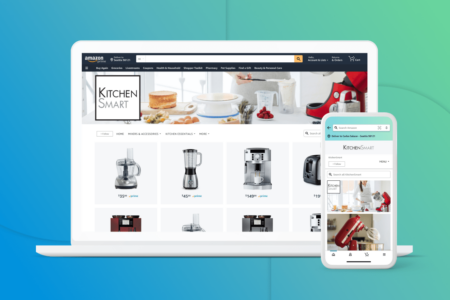Do you have an idea for an ecommerce business but aren’t sure how to get it off the ground? Building an ecommerce website can seem daunting, but it doesn’t have to be! Follow this step-by-step guide on how to build an ecommerce website, and you’ll be up and running in no time.
What You Will Need to Get the Ball Rolling
Sure, you need to think about a domain name, web hosting—but that’s just the technicalities. Before you get started on your website, it’s important to think about some of these essential factors:
- How do you want your website to look? Think about competitors, or websites you have seen with features you would want to include/improve upon.
- Who is my target audience? Who are you trying to attract with this website?
- What will I sell them? How can I connect with them online?
- Will I be able to easily update content without any outside help or do I need professional assistance?
- How will traffic be driven to my site?
- Once traffic comes in, how do I convert it into sales?
These are just a few questions that you should ask yourself before you dive headfirst into building your ecommerce website. You don’t need everything answered perfectly, and it might change down the road, but these will be the key questions placed to you in the coming processes, so it is important to have them front of mind. Remember, planning is key if you want your ecommerce business or start-up venture to not only survive but thrive!
Setting Up Your Domain & Site Builder
Back to the technicalities. Before you start building your ecommerce website, you need to decide on a domain name for your business. First, you should register a domain name with a reputable service that is affordable and offers security in your purchase. Keep it relevant to your business name and service to ensure potential visitors will be able to find it.
Next step: choose your site builder. There are tons of options on how you build your e-commerce site, such as Shopify, WordPress and Magento. They all have benefits and features that work well for different businesses based on their needs, whether you are a seasoned developer, or an absolute newcomer to the practice.
Designing Your Website
Think about how your customers will use your site and how they expect it to work, and consider designing a website that flows logically from page to page. Also, choose a professional-looking template that matches your brand identity—and keep in mind that design isn’t just a cosmetic element. Your website needs to be easy for customers to navigate so they can find exactly what they’re looking for quickly. To build a successful ecommerce site, you need every aspect of it—including functionality and design—to be optimised for user experience (UX).
Adding Content to Your Website
Before you can earn money from your site, you need to add content. This is the copy on your home page telling visitors about your brand, the product descriptions making the pitch for conversion, and articles and blogs to showcase your authority within the industry. Ensure you take great care in developing your content, as it will serve several purposes, including informing and engaging potential customers, include SEO elements that will help you to be found on search engines, and also be used to expand your wider digital presence, such as social media accounts.
Select Reliable & Supported Hosting
Once you have your website built, you’ll need a place for it to live. If you have a large business, you can get special hosting from larger companies like Amazon Web Services or Microsoft Azure. However, if you’re just starting out, consider getting a smaller plan that should work well for your needs while saving money.
There are a range of popular options for small businesses, but chances are the same provider where you sourced your domain name will also offer the hosting services to keep everything simple and in one place. Regardless of which service you choose, be sure that they offer 24/7 customer support because you will most likely run into issues with your site at some point in time and want someone on hand ready to help fix it.
Digital Marketing to Reach Your Target Audience
An e-commerce website is the digital storefront of your business, which means you will need to adopt digital marketing methods in order to attract visitors. Depending on your industry or niche, the amount of competition will vary, but when you follow proven practices across the channels suited to your offerings, success can be found and enjoyed over an extended period of time. The various digital marketing options available to you include:
- Search Engine Optimisation (SEO)
- Google Ads, Google Remarketing, & Google Shopping
- Microsoft Advertising
- Social Media Advertising (Facebook, Instagram, LinkedIn & more)
- Email Marketing
- Conversion Rate Optimisation
If you need further help with your ecommerce website, or the range of digital marketing you could use to attract new customers, contact us at Clearwater today.



